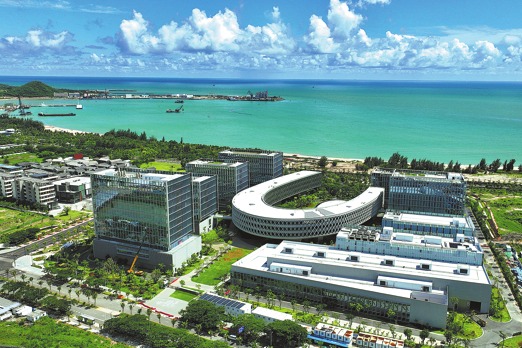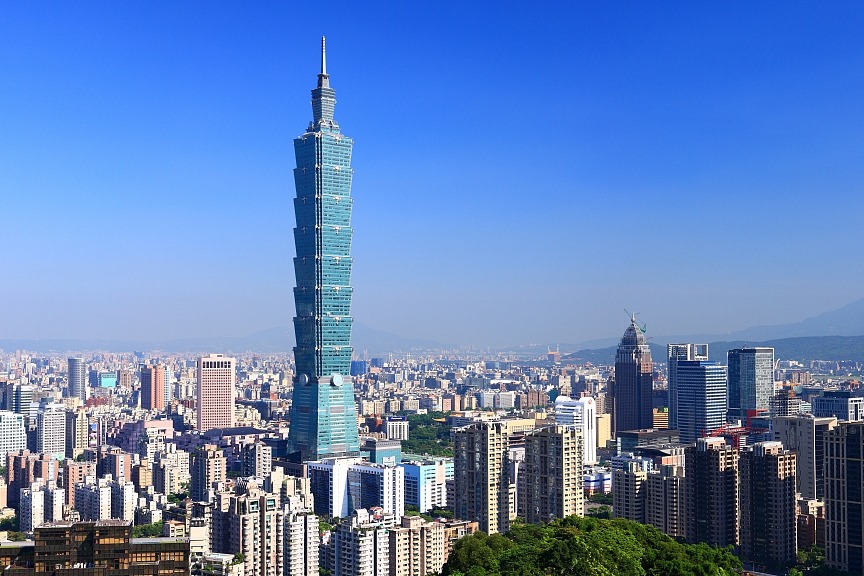Key supporter


Belt and Road Initiative can facilitate the implementation of the African Continental Free Trade Agreement
While it is home to more than 16 percent of the global population, Africa has a small share of global trade and GDP, 2.1 percent and 2.9 percent respectively. To change this situation, Africa is implementing its Agenda 2063 development plan.
Creating one African market through the African Continental Free Trade Agreement (AfCFTA) is one of the flagship projects of Agenda 2063. After the launch in May 2019, 54 among the 55 African countries endorsed the AfCFTA and moved to implementation on Jan 1,2021. Full implementation of the agreement is expected to boost intra-African trade from 13 percent to around 52 percent.
But Africa's large infrastructure deficit in roads and ports is among the major challenges hindering the implementation of AfCFTA. Estimates by the African Development Bank show that the continent's infrastructure needs an amount of $130 billion to $170 billion a year, with a financing gap in the range of $68 billion to $108 billion.
Also, debt distress is affecting African nation's eligibility for international infrastructure financing. From 1970 to 1987, the ratio of total external debt to GDP in African countries skyrocketed from an estimated 16 percent to 70 percent. And unsettled multilateral debt obligations rose from $58.7 billion to $110.45 billion between 2010 and 2018. This critically challenges the loan-soliciting efforts of African nations to finance the continent's infrastructure gaps.
Key stakeholders, especially the African Union and its member states, are giving attention to the growing role of the Belt and Road Initiative in addressing Africa's infrastructure gap. Infrastructure connectivity is high on the BRI agenda — China's proposal to build a Silk Road Economic Belt and a 21st Century Maritime Silk Road in cooperation with participating countries. As of April 2020, China had invested in Belt and Road projects in 42 different African countries.
Through the proactive move of the Ethiopian government and cooperative responses from the Chinese government, the Addis Ababa-Djibouti Railway became a reality in 2017. Before the new railway replaced the century-old Italian-built Ethio-Djibouti railway in 2017, containers were taking more than three days to reach Addis Ababa, the capital of Ethiopia, from Djibouti port. The electric-driven railway has reduced the transportation time from three days to less than 20 hours and has also reduced the cost by at least one-third. The volume of goods transported is increasing by 25 percent every year on average, if the interruption of the COVID-19 pandemic is excluded.
This confirms the significance of the BRI for Africa especially in the context of the crying need of Africa to seize the new opportunities created by the AfCFTA.
But this opportunity is not without headwinds. According to a recent report from the Green Finance and Development Centre at Fudan University in Shanghai, Belt and Road investment in sub-Saharan Africa fell by 54 percent in 2022, to $7.5 billion from $16.5 billion in 2021. Many factors contributed for this fall, a case in point is the resistance coming from the United States. Since December 2019, the US Congress has been funding a Countering Chinese Influence Fund, which instructs the executive branch to challenge Chinese influence, including through the BRI, in Africa and elsewhere.
For a better realization of the AfCFTA's aspirations, the BRI can be taken as one strategic opportunity to address the infrastructure gaps in Africa. But what are the key points the stakeholders should give attention to?
First, strategic planning is essential for infrastructure development. Efficient prioritization and utilization of infrastructure helps address the growing concern about debt distress in Africa. The best way to address this is to strategically align each infrastructure project with the host country's national development plans under a strict prioritization and implementation follow up.
Second, cross-border infrastructure is crucial for enhancing intra-Africa connectivity. It is common to plan and build infrastructures at the country level. But cross-border initiatives such as the AfCFTA need cross-border infrastructure planning that connects compatible economies of neighboring countries with possibilities of cooperating in their comparative advantages.
Third, lessons can be learned from the experience of others about developing intra-regional trade. It is a huge task for the AU and its member states to deal with 54 fragmented market spaces with a diverse status and political economic thinking. Africa can learn a lot from Asia in this aspect. Mounting evidence suggests trade liberalization and the ability of much of Asia to respond flexibly to world demand is the reason for the spectacular growth in South-South trade. Therefore, the South-South cooperation (SSC) platform should be seen by the AU and its member states as one capacity building opportunity. The SSC has gained good momentum in Asia in more diverse fields. And Africa can learn from this Asian experience.
Fourth, enhancing debt management capacity is necessary to make the best out of BRI for Africa's infrastructure needs. Debt distress is a growing challenge in the continent. Thus, the debt management capacity of Africa needs special attention. The available menu of options for debt management includes securitization, secondary markets, and renegotiation, including debt write-off as well as debt-for-equity schemes. The capacity of Africa to implement such debt management schemes should be strengthened both at the continental organization level, as well as at the level of the member states.
The author is a PhD student at Peking University, ex-state minister of planning and development of Ethiopia and ex-secretary general of the Ethiopian Chamber of Commerce and Sectoral Associations. The author contributed this article to China Watch, a think tank powered by China Daily. The views do not necessarily reflect those of China Daily.
Contact the editor at editor@chinawatch.cn.


































